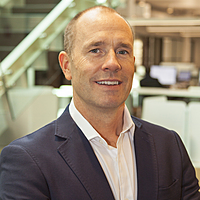9 red flags of small-cap income stocks

While investors feel at ease turning to big caps for income, they sometimes forget a company doesn't need to have a $50 billion market cap to be a stable, mature and profitable business. So, for investors with the appropriate skills, small-cap investing can be highly rewarding, not just from a capital growth perspective, but for an income perspective as well.
In our previous wire, Matt Williams from Airlie Funds Management, Marc Whittaker from Investors Mutual, and Jack Collopy from Perpetual Investments shared some of their processes, along with the stocks that passed their filters. These had an average yield of 3.8%, 5.1% and 8.0% respectively.
While there are some great income opportunities at the small end, it is critical to avoid the landmines out there too. So in this wire, we ask our experts for some of the red flags they monitor when assessing small-cap income stocks.
Jack Collopy, Perpetual Investments
1: Start with the balance sheet
A priority for us is always the balance sheet. A big dividend this year can easily become no dividend next year when a company takes on too much debt.
2: Are earnings consistent
We want to see that a company has a track record of delivering consistent earnings. If you’re after sustainable income, you want to avoid those companies whose earnings swing wildly from year to year.
3: Dividends should not exceed earnings!
Also, make sure that a company isn’t paying out more than it’s earning. This happens more often than you’d think and clearly isn’t a sustainable strategy.
Marc Whittaker, Investors Mutual
4: How recurring are the earnings and cash flow
We are interested in holding companies that can pay a sustainable and growing yield over time and believe that companies such as this should outperform in the long term.
If a company’s earnings are highly volatile or there is a significant mismatch between earnings and cash flow, this can begin to raise questions over a company’s ability to consistently fund its dividend.
5: Is the company’s payout ratio sustainable
The contribution of one-off profits or the normalisation of non-recurring expenses can mean that a company may find it difficult to grow its dividend over time.
6: Is management choosing wisely between reinvestment and dividends
If a company is consistently paying a high dividend at the expense of reinvesting into its own competitive advantages, such as R&D or new product development, the long-term outlook for the company’s products or services will diminish over time and this will have consequences for the sustainability of the dividend.
Matt Williams, Airlie Funds Management
7: Focusing solely on yield can lead to blind spots.
To take an extreme example; On June 30 2006, Telstra shares were $3.68 and in the next twelve months paid 28c in dividends – a yield of 7.6%! Super attractive right? On the same day, CSL closed at near $18 – a yield of 1.9%. You know the rest of the story….
8: Super high yields are a red flag
Looking for a super high level of yield is a recipe for disaster.
The no. 1 indicator of a future cut to the dividend is a well above average high yield!
9: Assess the business quality
So investors need to consider the quality of the business, the current capital structure, and the management philosophy (e.g. you think you’ve bought a steady dividend grower but management may have grand plans which involve raising equity finance)
Small-cap dividend champions (and how to find them)
Most investors looking for equity dividend income turn to the same six old names, even if the threat of another dividend cut hovers just overhead.
However, dividend champions are on offer among small-cap stocks, which we define as having a market cap of less than $5 billion, in other words, ex-ASX50.
In our last wire, we asked our experts how they start off by narrowing the field and to share the results of the names that passed their filters.
In the next wire, we ask our experts their top pick from their lists, and to expand on their investment thesis. Please hit FOLLOW to get it first.
2 topics
2 stocks mentioned
5 contributors mentioned

Alex happily served as Livewire's Content Director for the last four years, using a decade of industry experience to deliver the most valuable, and readable, market insights to all Australian investors.
Expertise

Alex happily served as Livewire's Content Director for the last four years, using a decade of industry experience to deliver the most valuable, and readable, market insights to all Australian investors.
